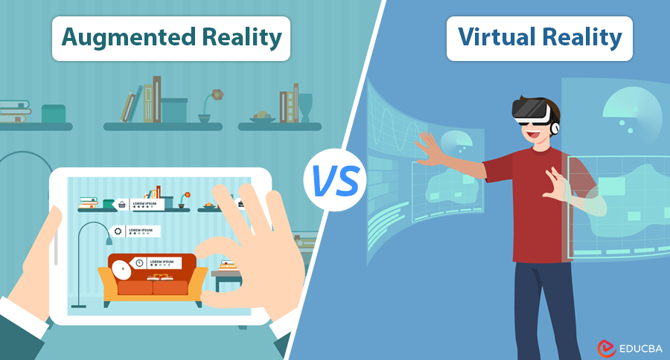Educba
2w
264

Image Credit: Educba
Augmented Reality vs Virtual Reality
- Augmented Reality (AR) overlays digital elements onto real surroundings, while Virtual Reality (VR) creates a completely virtual environment.
- AR is accessible via smartphones, tablets, and smart glasses, whereas VR requires headsets and advanced equipment.
- Both AR and VR are used in gaming, education, healthcare, and retail industries.
- Choosing between AR and VR depends on goals, budget, and user experience needs.
- AR uses devices' cameras and sensors to blend digital content with the real world, enhancing information and entertainment experiences.
- VR immerses users in a digital universe with 3D visuals, motion tracking, hand controllers, and audio immersion.
- Popular AR devices include smartphones, smart glasses, and AR headsets, along with AR software platforms like ARKit and ARCore.
- Popular VR devices include Oculus Quest 2, PlayStation VR, HTC Vive, and Valve Index, offering immersive experiences and advanced controllers.
- AR enhances real-world views with overlays, while VR completely replaces the real world with virtual scenes.
- AR is cost-effective and mobile, suitable for retail and education, while VR provides deep immersion for gaming and virtual tours.
Read Full Article
15 Likes
For uninterrupted reading, download the app